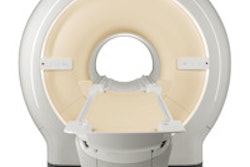Dear MRI Insider,
Given the escalating popularity of PET/MRI, the American College of Radiology (ACR) and the Society of Nuclear Medicine and Molecular Imaging (SNMMI) want to make sure clinicians are properly trained to read the hybrid images.
To that end, the two organizations have released the first in a series of competency requirements for readers to gain proficiency in PET/MRI scans. The first document was published online this month in the Journal of Nuclear Medicine, and it offers guidance on how much training and firsthand experience is needed to adequately read and interpret images from PET/MRI brain scans. Click here to find out what you should do to achieve competency levels with PET/MRI.
It has been a rough winter for New England, but it's been summer at Yale-New Haven Children's Hospital's new pediatric MRI suite since January. The facility has begun scanning children in a new beach-themed "Scan-Castle," featuring a seascape painted on the wall and blue waves on the tiled floor. The $6 million investment is helping kids and their parents feel more relaxed before and during MRI scans.
Understanding the behavior of preteens is a daunting task in general, but researchers from the University of California, San Francisco have had early success in using functional MRI to investigate why some girls ages 11 to 13 might be more prone to exploration than others. They found that certain brain regions of preteens who are prone to experimenting or exploring new adventures process information differently than those who tend to be more cautious.
Other big news is the U.S. Food and Drug Administration's order to GE Healthcare to fix thousands of its MRI scanners to correct a problem that could "result in life-threatening injuries," according to the agency's notice. The action covers some 33 brand names of scanners and thousands of systems distributed throughout the world, manufactured from 1985 to today.
Elsewhere, a new German study has found that breast MR is useful for working up suspicious lesions classified as BI-RADS 4 at mammography or ultrasound; in fact, the modality could help avoid 92% of unnecessary biopsies.
Finally, new data from the U.S. Centers for Medicare and Medicaid Services show wide variations in the use of brain CT and lumbar MRI across the U.S. The findings could help policymakers tailor interventions to curb overuse among providers.
Be sure to stay in touch with the MRI Community on a daily basis to learn more about novel research from around the world and how it is contributing to clinical practice.


.fFmgij6Hin.png?auto=compress%2Cformat&fit=crop&h=100&q=70&w=100)





.fFmgij6Hin.png?auto=compress%2Cformat&fit=crop&h=167&q=70&w=250)











